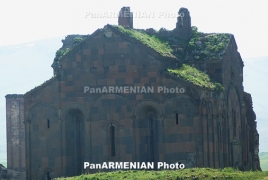National Geographic: Ani, medieval Armenia's "city of 1,001 churches" April 9, 2020 - 16:57 AMT PanARMENIAN.Net - The National Geographic has unveiled a fresh article about the city of Ani, the capital of medieval Armenia, which "was a thriving center of trade and faith" and is now survived by its haunting ruins. Ani was the cosmopolitan capital of medieval Armenia, one of the earliest kingdoms to adopt Christianity as its state religion in 301, the article says. "The site of a fifth-century fortification, Ani was chosen to be Armenia’s capital in the 10th century. It became home to as many as 100,000 people, and was so richly endowed with sacred buildings that it came to be known as the “city of 1,001 churches,” the feature says. "Its strategic position along trade routes between the Black Sea and the Caspian Sea made it an attractive possession, condemning it to centuries of invasion—and eventually, a long period of abandonment." According to the piece, although different empires rose and fell on the site, Armenian identity prevailed. "The serene ruins of the city, once swarmed by armies through the ages, has always been a special place for Armenians. In the wake of the Armenian Genocide, it stands as an even more powerful reminder of Armenia’s losses and of its astonishing endurance," the article condcludes. The number of state universities will be reduced from 23 to 8 by 2030, Minister of Education, Science, Culture and Sport Zhanna Andreasyan has said. From September 21 to November 11, a total of 2,820 Russians registered at a place of residence in Armenia, the police has said. The situation on the contact line between Karabakh and Azerbaijan was relatively stable overnight, the Defense Army says. Defense Minister Suren Papikyan has visited the southern Armenian province of Syunik, the Defense Ministry reported on March 18. Partner news |